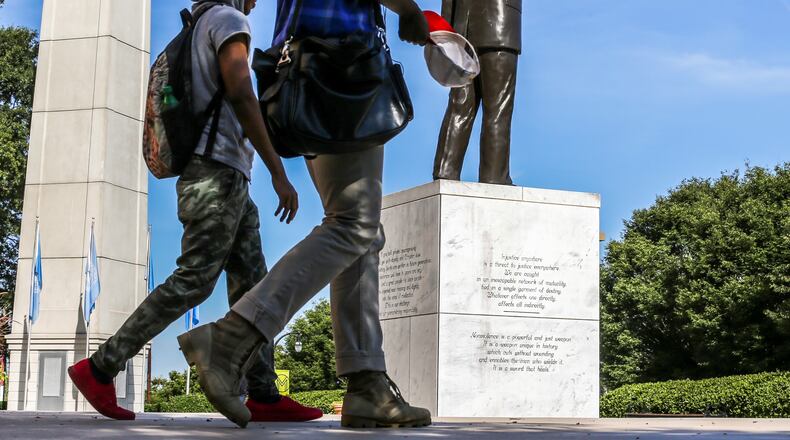Morehouse graduate and former president John Silvanus Wilson says Morehouse inoculated him against doubts about his ability to compete anywhere, including Harvard where he went on to earn two master's degrees and a doctorate.
“At Morehouse, they held a crown over my head and expected me, challenged me, to grow tall enough to wear it. When I came to Harvard, they held a question mark over my head. I felt the institution was causing me to ask do I belong here,” he said.
Wilson say the confidence he gained at Morehouse enabled him to ignore the mixed messages he heard at Harvard, where today he is a senior advisor and strategist to the president. A panelist last week at the Harvard T.H. Chan School of Public Health on mental health and wellness for students of color, Wilson joined other experts addressing how colleges must examine longstanding practices and campus cultures that convey to minority students they aren't valued or accepted.
Those messages can be overt, such as the noose found earlier this month in a University of Illinois residence hall, or they can be smaller acts, known as microaggressions, such as telling black classmates after a presentation, "You're so articulate" or asking them to be the voice of an entire race -- "What do black people think of Joe Biden?"
College can be stressful for all students, but students of color face unique pressures in repeated exposure to racism, discrimination, microaggressions and questions about belonging on campus, said Stephanie Pinder-Amaker, founding director of the College Mental Health Program at McLean Hospital, an affiliate of Harvard Medical School. A Harris Poll of 1,000 college students with equal samples of African American, Latinx, white and Asian American students found that students of color are significantly less likely than white students to describe their campus as inclusive — 28% to 45%. Students of color are also more likely to report they often feel isolated on campus, 46% to 30%.
There has been troubling news about the mental health of African-American children. While suicide rates in the United States have traditionally been higher among whites than blacks across all age groups, a 2018 study published in JAMA Pediatrics found suicide rates for black children aged 5-12 were roughly two times higher than those of similarly aged white children.
"What does it mean to be African-American in this society that we have seen a doubling of the suicide rate among children aged 5 to 12 over a 20-year window?" said David Williams, chair of the Department of Social and Behavioral Sciences at Harvard T.H. Chan School of Public Health.
A survey two years ago asked college students of color about their top concerns. "The biggest concern of these students was aggressive policing -- am I even going to make it home tonight? A second big concern was high levels of community violence and the third one was about financial stress, their ability to make it and the stability of their housing," said Williams. Such feelings of uncertainty, fear and hopelessness "are the recipe for mental health challenges, for being overwhelmed by stress," he said.
"Mental health concerns are like off the charts," said Wilson "If we recognize that, if they're off the charts in general, and students of color are less likely to be aware of the services, less likely to be diagnosed and less likely to be treated, that really brings into focus the institutional responsibility. We cannot presume that the mental health services set up for one audience are suitable for all audiences. If I don't believe you want me here, I'm not inclined to come in and get your services."
Wilson said students of color bypass university services for the same reason they peer into the barbershop at the student center and keep walking. "If all the barbers look like Donald Trump, for instance, people are not going to guess you know something about me. It is the institution's responsibility to lower the barriers."
Often, students of color seek out each other to carve out safe places where they can be honest and be heard. Acknowledging the "sub family" he relied on while at Harvard grad school, Wilson said those informal support networks don't absolve universities of fostering a welcoming environment campus-wide. "We want the whole campus to be a safe space, the whole community to be a safe space."
About the Author
The Latest
Featured



